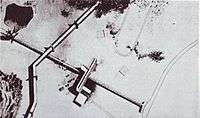Mikhail Okhitovich

Mikhail Aleksandrovich Okhitovich (Russian: Михаи́л Алекса́ндрович Охито́вич) (1896—1937) was a Bolshevik sociologist, town planner and Constructivist architectural theorist, most famous for his 'Disurbanist' proposals of 1929-30.
Okhitovich, born in Saint Petersburg, joined the Bolshevik Party in 1917 and served in the Red Army from then until 1925. He became a supporter of the Left Opposition of Leon Trotsky, leading to his expulsion in 1928. He was readmitted to the Party in 1930, at which time his theories were garnering a great deal of attention. Disurbanism, which he propounded mainly via the OSA Group's journal SA, is a theory resembling Frank Lloyd Wright's Broadacre City: an abandonment of the metropolis in favour of a diffuse, partly agricultural but technologically advanced network. His proposals were, along with other OSA members, the basis of the rejected Magnitogorsk plan of 1930 and a 'Green City' competition of the same year. Le Corbusier's riposte to Okhitovich's proposals would become the Ville Radieuse.
In 1933 Okhitovich was reprimanded by the Communist Party and in 1935, a speech of his in which he defended Constructivism and attacked the Stalinist 'cult of hierarchy' and nationalism caused consternation. A campaign led by Karo Alabyan and Arkady Mordvinov led to his arrest the same year. He was sent to the Gulag, where he was shot in 1937.
References
- Hugh D. Hudson, Jr. Terror in Soviet Architecture: The Murder of Mikhail Okhitovich Slavic Review Vol. 51, No. 3 (Autumn, 1992), pp. 448–467
